The Inosilicates
Steven Dutch, Professor Emeritus, Natural and Applied Sciences,
Inosilicates, from the Greek inos, fiber, are characterized by polymer chains of SiO4 tetrahedra. The chains link to strips of cation-oxygen octahedra.
Pyroxenes
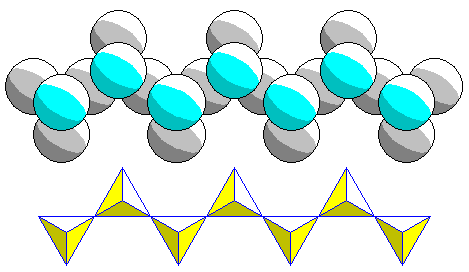
The textbook pyroxene chain is shown above. In reality, the zigzag structures shown below are much more common.
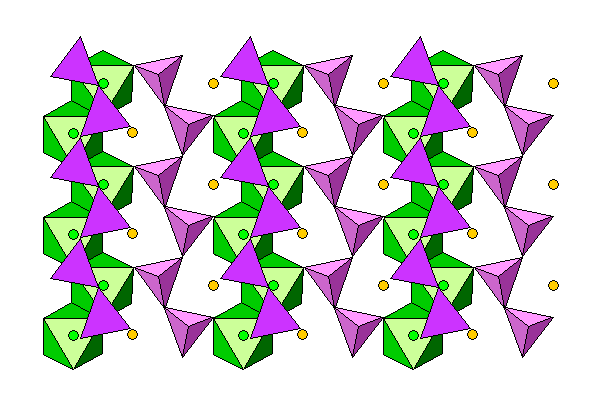
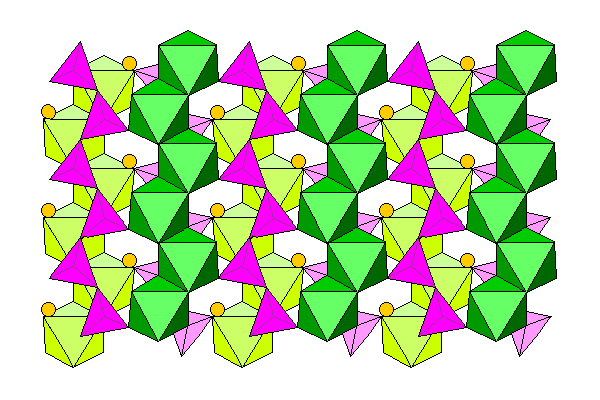
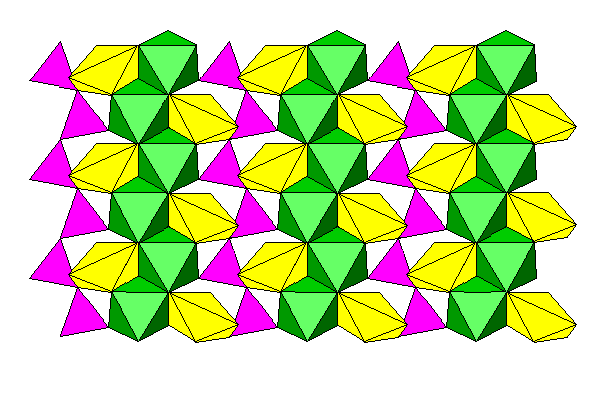
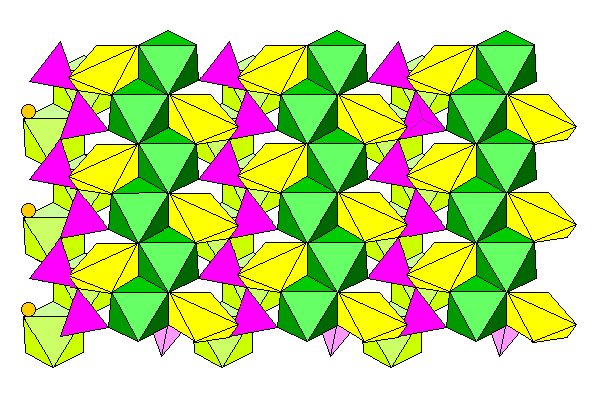
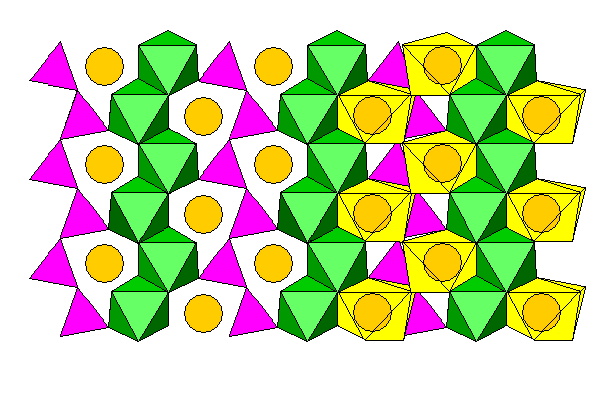
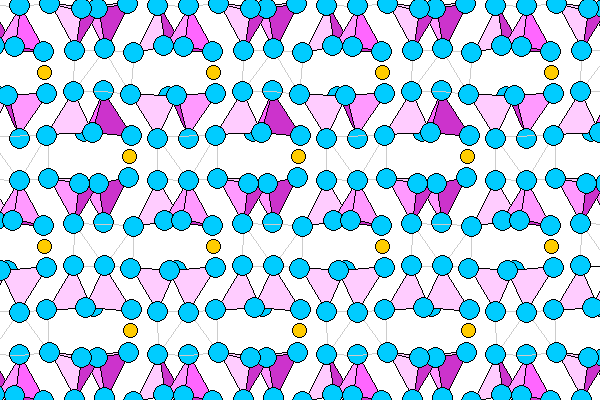
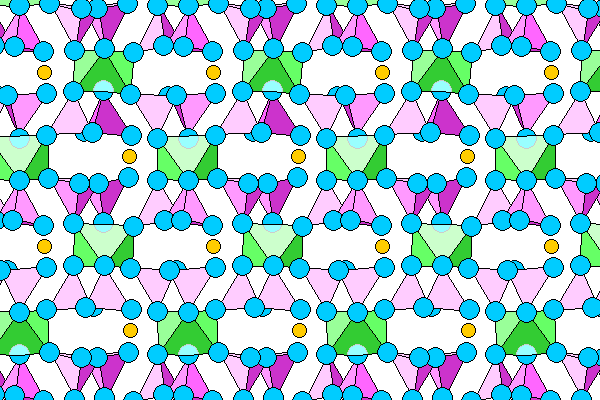
Pyroxenoids
Pyroxenoids have single chains, but because they either have too many or too few large cations, the chains are kinked differently from normal pyoxenes. As a result they lack the normal pyroxene cleavage.
Wollastonite


Rhodonite
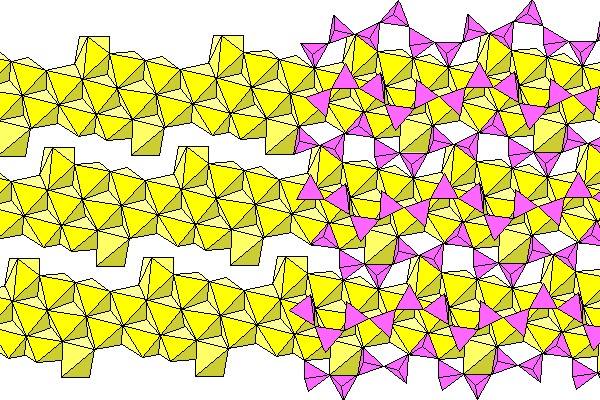
Pyroxmangite
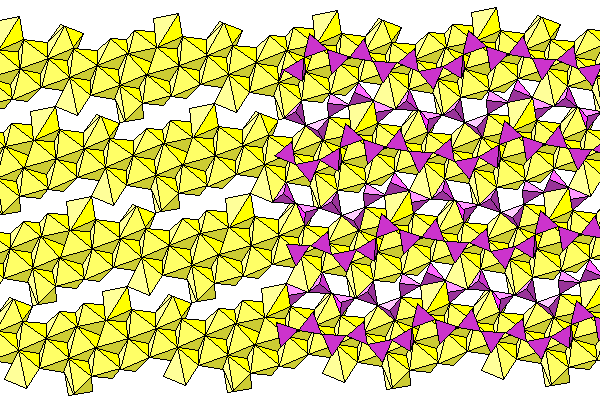
Pectolite
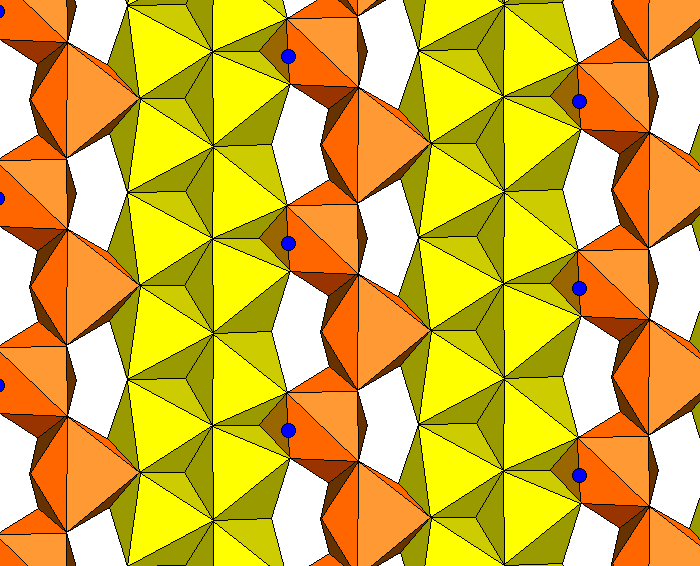
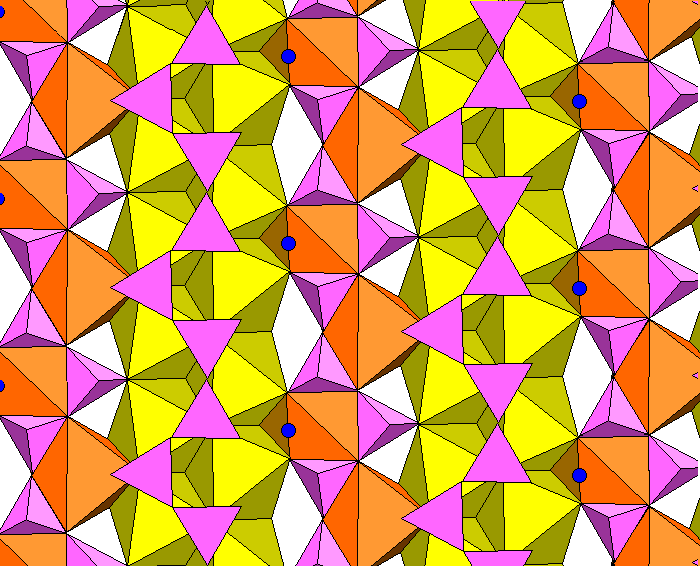
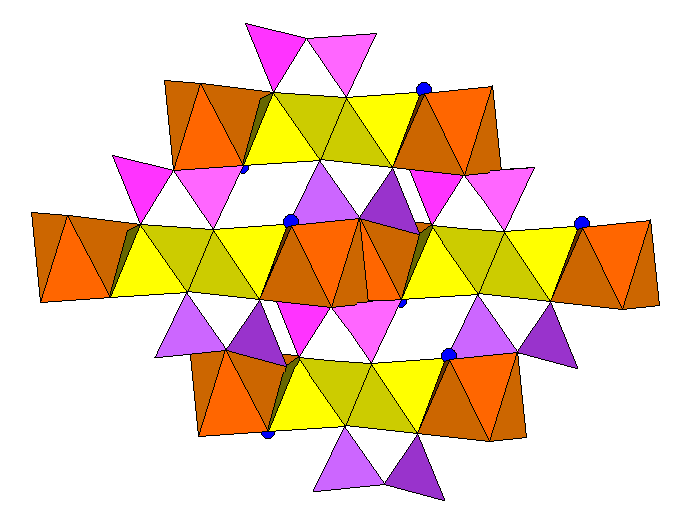

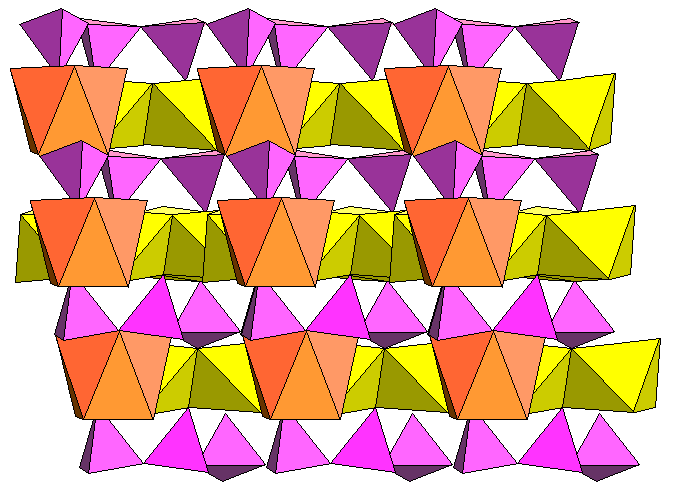
Amphiboles
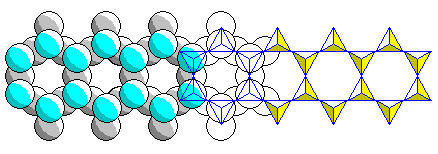

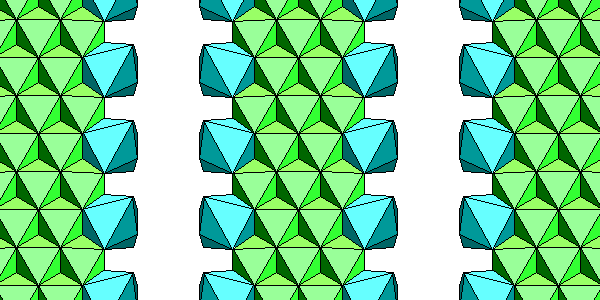

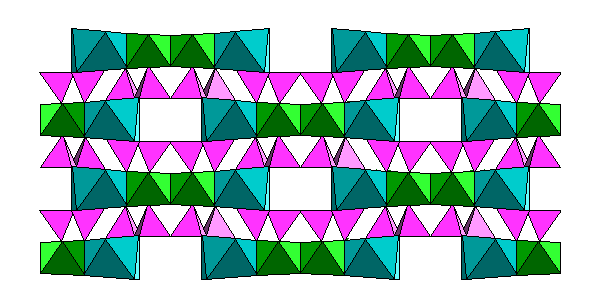
Triple and Mixed Chains
Jimthompsonite (so named because the name thompsonite was already taken), Clinojimthompsonite and Chesterite aren't conspicuous minerals or very abundant. They are probably more abundant than we think simply because people don't look for them very often. But they are very important minerals because they was the first triple-chain silicates ever discovered. Chesterite, in addition, was the first mixed-chain silicate ever discovered, where double and triple chains alternate.

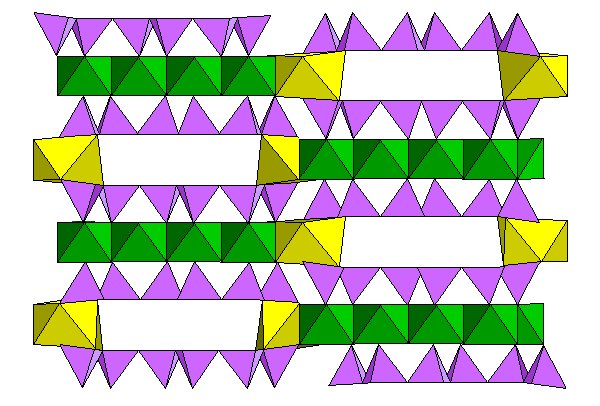
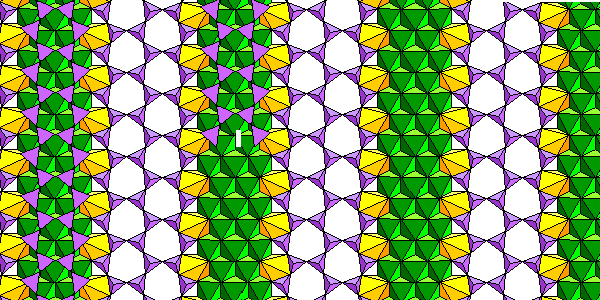
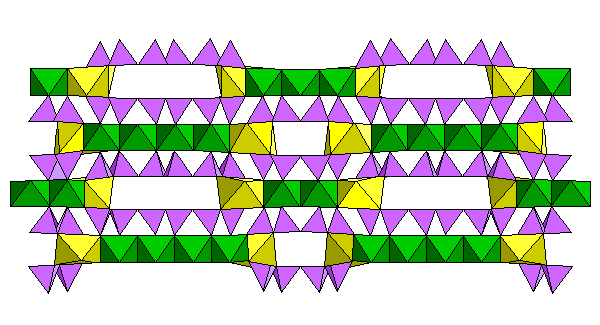
Return to Mineralogy-Petrology Index
Return to Thin-Section Index
Return to Crystals and Light Index
Return to Crystal Structures Index
Return to Mineral Identification Tables
Return to Professor Dutch's Home Page
Created 22 April 2013, Last Update